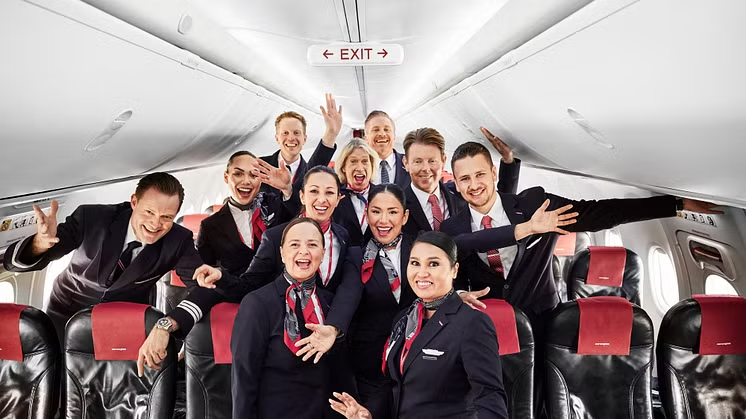Access selected deals available with budget and full-service airlines
Lock any airfare that sounds great. You don’t lose anything if you cancel it
Call us anytime for any assistance. We do not go into hibernation
Your personal and financial information stays secure with us
Norwegian Air Shuttle ASA, commonly known as Norwegian, is a prominent low-cost airline headquartered in Fornebu, Norway, just outside Oslo. As the third-largest low-cost carrier in Europe, Norwegian has established itself as a key player in the aviation industry, focusing on affordability, sustainability, and customer choice. Below is a detailed overview of Norwegian’s history, operations, fleet, services, challenges, and future outlook.

Norwegian Air Shuttle was founded in 1993 as a regional airline operating Fokker 50 aircraft on short-haul routes in Norway. It transitioned into a low-cost carrier in 2002, adopting a fleet of Boeing 737 aircraft to offer affordable fares across Europe. This shift marked the beginning of Norwegian’s rapid expansion, driven by its core values of providing low-cost travel while maintaining customer choice and value.
In 2012, Norwegian ventured into long-haul operations with the establishment of its subsidiary, Norwegian Long Haul, operating Boeing 787 Dreamliners. The airline launched transatlantic flights to the United States and routes to Asia, becoming a pioneer in low-cost long-haul travel. Notable milestones include its first long-haul flight from Oslo to New York’s John F. Kennedy International Airport on May 30, 2013, and the introduction of flights to Singapore in 2017. However, the long-haul venture faced challenges, including delays with early Dreamliner operations and financial strain, leading to the suspension of long-haul services in March 2020 due to the COVID-19 pandemic. On January 14, 2021, Norwegian announced the permanent termination of its long-haul operations, focusing instead on a simplified short-haul network.
The COVID-19 pandemic severely impacted Norwegian, prompting a restructuring process. In November 2020, the airline sought bankruptcy protection in Ireland to reorganize its operations, reducing its fleet and returning several aircraft, including Boeing 787s, to lessors. By 2021, Norwegian emerged with a streamlined business model, concentrating on domestic routes in Norway, Nordic connections, and key European destinations.
As of 2025, Norwegian operates a modern, fuel-efficient fleet of approximately 70 Boeing 737-800 and 737 MAX 8 aircraft, serving over 85 destinations across Europe, North Africa, and the Middle East. The airline’s primary hub is Oslo Airport, Gardermoen (OSL), with additional bases in Bergen, Copenhagen, Stockholm, and Helsinki. Norwegian’s route network emphasizes popular city-break destinations like Barcelona, Berlin, and London, as well as Mediterranean holiday spots such as the Costa del Sol, Algarve, and Canary Islands.
Norwegian previously operated long-haul routes to the US, Asia, and South America through subsidiaries like Norwegian Long Haul, Norwegian Air UK, and Norwegian Air International. These operations used Boeing 787s and, briefly, Boeing 737 MAX aircraft for smaller transatlantic routes.